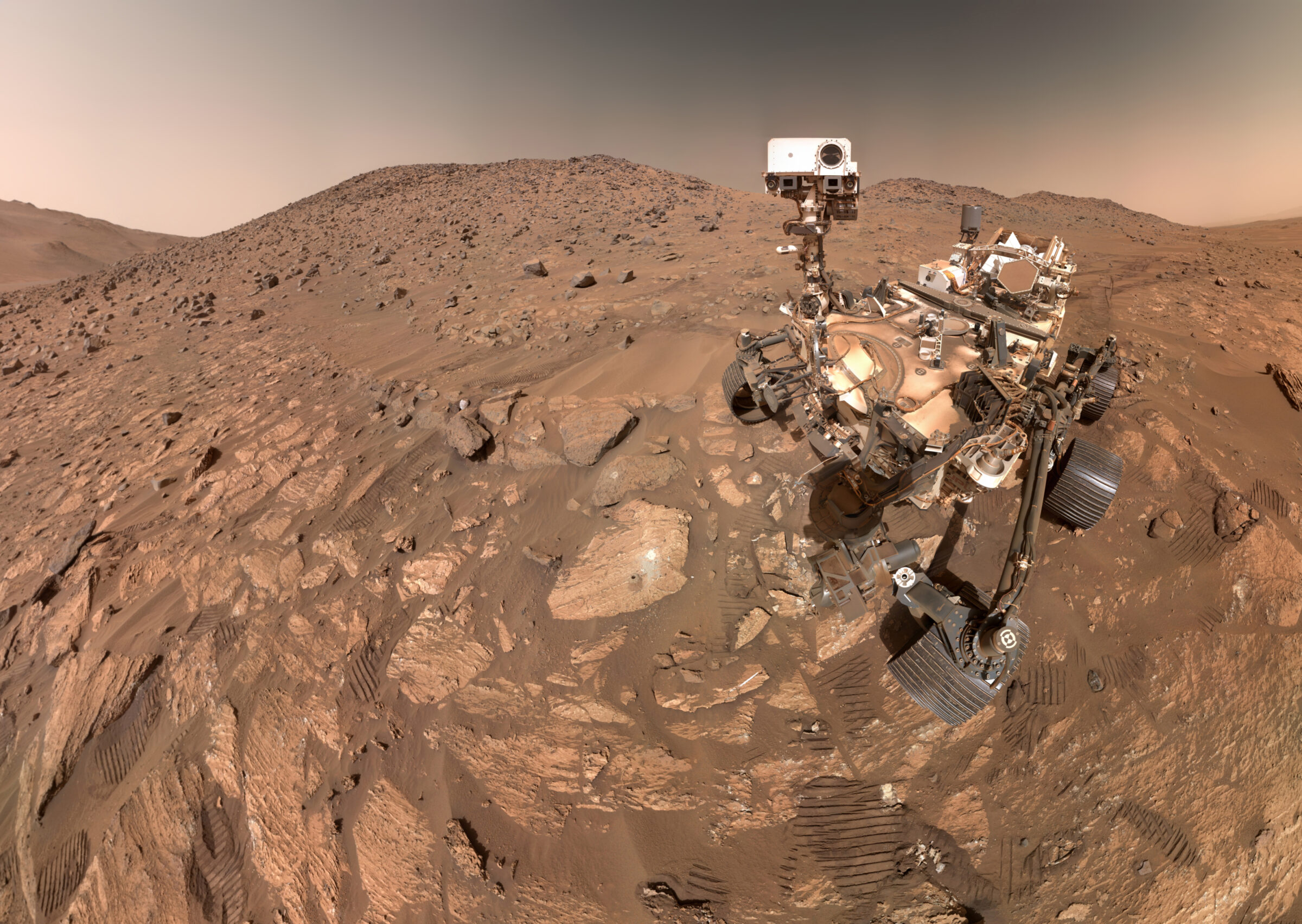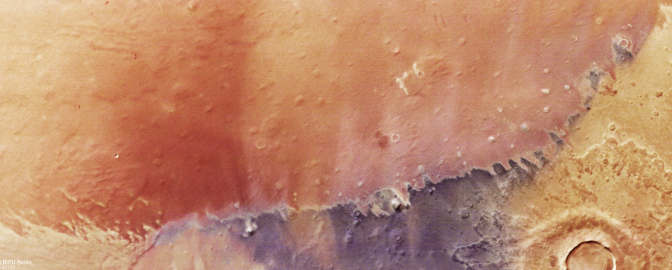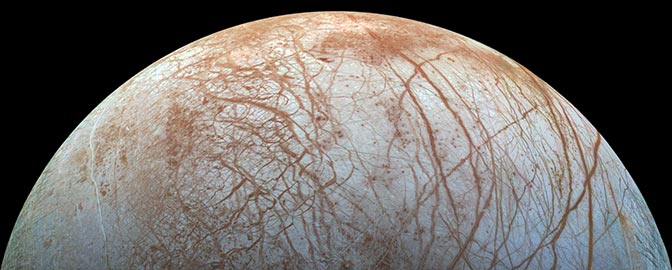Our best proof of life on Mars yet? A deep dive into Cheyava Falls
On Sept. 10, 2025, NASA announced what it called the “closest we have ever come to discovering [ancient] life on Mars.” A Martian rock, studied by the agency’s Perseverance rover, appeared to show possible evidence of past microbial life. After investigating for months, NASA scientists published their conclusions: they could not come up with any other way to easily explain what they saw.
Still, the agency (and The Planetary Society) stressed that this was not a conclusive “We found alien life!” announcement. So, just how close is the “closest” we’ve come to discovering life on Mars? How hopeful or pessimistic should we be? Is this going to be another would-be “sign of life” that seems to weaken over time, like phosphine on Venus, dimethyl sulfide on K2-18 b, or fossils in the Martian meteorite ALH84001?
The short answer is that this lone rock on Mars, while no smoking gun, is truly different from what we’ve seen before in the search for life. To understand why, we have to dive deep into what Perseverance has found.

A chance find, by design
In July of 2024, Perseverance was driving along what was once an ancient Martian river. Water had flowed there billions of years before, carrying silt into a nearby lake. Back then, Mars was at least intermittently temperate and — potentially — hospitable to life.
Later, the river dried up. An outcrop of rock fractured and tumbled down into the channel. There, eons later, Perseverance chanced upon it.
The rock, since named “Cheyava Falls,” immediately jumped out at the rover’s science team.
Cheyava Falls is covered in two intriguing sorts of markings: “poppy seeds,” which are dark dots the size of ultra-fine glitter, and “leopard spots,” larger splotches of lighter tones surrounded by dark rims. When Perseverance took a closer look, it also found signs of organic compounds in the rock. These are the chemical building blocks of life as we know it.

Rocks with patterns like this exist on Earth, and scientists think they’re most often explained by the activity of microbes. In fact, years before Perseverance launched, scientists proposed that rovers should look for similar rocks on Mars. They predicted that if life ever existed on the red planet, it could have left behind such patterns. Plus, the spots would be relatively easy to pick out from afar.
“It's exactly the type of sample that NASA, the European Space Agency, [and] all of us for decades engineered the Perseverance rover to be able to find,” said Bethany Ehlmann, director of the Laboratory for Atmospheric and Space Physics at the University of Colorado Boulder and president of The Planetary Society. Ehlmann is also a co-investigator on two of Perseverance’s science instruments.
Martian meals
The reason these spots hint at life comes down to one thing: digestion. Cheyava Falls’ leopard spots and poppy seeds are signs of chemical reactions, ones that Martian microbes could have once used to gain energy.
All life needs energy to survive. Some gather sunlight, like plants do with photosynthesis. Others harvest energy from chemical bonds. This is possible because every compound has some amount of energy that it takes to hold itself together. If a microbe can find a way to convert one chemical into another whose bonds require less energy, the creature can reap the difference in energy for itself. Think of an alpine lake sitting above a valley: if you can dig a channel down from the lake to the valley, you can build a mill on the river as it flows downhill.

In the case of Cheyava Falls, microbes could have converted organic compounds (the “lake”) into lower-energy chemicals like water and carbon dioxide (the “valley”). Crucially, this would require taking electrons from the organics and giving them to iron atoms.
The spots and poppy seeds seem to trace this process. Both the poppy seeds and the dark rims of the spots are made up of a mineral called vivianite, which would only be formed by Cheyava Falls’ iron atoms after they had been given electrons. Perseverance found organics in the same general areas of the rock where these reactions took place.
Here’s the kicker: when iron in rocks like Cheyava Falls receives electrons, it changes from rust-red to pale tan. The cores of the leopard spots are pale because they are where these chemical reactions have run their course, using up all the red iron they could.
And in these pale spots, Perseverance found another mineral, called greigite. This is where things get more complicated — but also more promising for the prospect of life.

Dinner, then dessert?
Greigite can only form if an ingredient called sulfide is present. It’s unclear if there was ever widespread sulfide in Cheyava Falls (more on this later), but there is, however, sulfate. And just as microbes can gain energy by taking electrons from organic compounds and giving them to iron, they can also gain energy — not quite as much, but some — by handing off electrons to sulfate. Combined with the paler form of iron in the rock, this would make sulfide.
That means Cheyava Falls has evidence of not just one, but two chemical reactions that microbes can use to make energy.
“It could, indeed, just be a coincidence,” said Jim Bell, board member of The Planetary Society, principal investigator for one of Perseverance’s science instruments, and co-author of the recent paper on Cheyava Falls. “Or, it could be two mutually supportive lines of evidence in the same direction.”

The story would go something like this: back in the day, microbes in Cheyava Falls concentrated wherever there was the most organic matter, then began “eating” it by handing off electrons to the iron in the rock. Where this only happened a little, it made the dark vivianite poppy seeds. Where this happened a lot, the reaction spread outward while turning the rock a pale tan color. In the spot cores, the microbes ran out of iron to give electrons to, and life instead harvested energy by giving electrons to sulfate, which ended up making greigite. This would leave pale cores of greigite rimmed with dark vivianite, just like we see in the leopard spots.
There’s more. Though Cheyava Falls is the only known Mars rock with distinct leopard spots, Perseverance found other rocks nearby with patches of vivianite and greigite. The paler these rocks were, the more organic compounds, vivianite, and greigite they tended to have. That makes perfect sense if the organic compounds were fuel for a reaction that turned the rocks pale and made vivianite and greigite — or, if the organic compounds we see today were leftover bits of the microbes themselves.

Signs of non-life
Scientists have come up with other explanations for Cheyava Falls that don’t require life. But, at least so far, none comfortably fit the broader picture.
The rock’s vivianite might be explainable on its own. Some organic compounds can, without any life present, give electrons to iron and end up making vivianite all by themselves. Unfortunately, we don’t yet know whether the organics in Cheyava Falls are of this category or not — Perseverance can’t carry the sorts of large tools that would allow us to know for sure.
But to make greigite, you still need sulfide. Though certain organics can also make sulfide on their own, without the influence of life, this is only known to happen at temperatures above 150 degrees Celsius (302 degrees Fahrenheit). Try as they might, the NASA scientists who discovered Cheyava Falls found no evidence that the organics ever got this hot. Instead, they claim that the spots are much more consistent with forming in a relatively cool, temperate environment.
The other explanation is that the sulfide came from elsewhere. If there were hydrothermal or volcanic activity near Cheyava Falls, it could have dissolved sulfide into the groundwater.

As luck would have it, there was once an active volcano within roughly 50 kilometers (31 miles) of Cheyava Falls. This volcano appears to be much younger than the rock, though, and there is no evidence that hydrothermal activity happened at the right time and place to explain what we see in Cheyava Falls.
Still, it conceivably could have. The bigger issue is that, even if sulfide did get introduced to the rock this way, it probably would not give you the exact patterns we see today.
Adding sulfide from outside Cheyava Falls, instead of making it within, would be more likely to give you splotches instead of sharply defined spots. It’d also change where you might expect there to be the most greigite in each individual leopard spot. The sulfide would likely be dwindling as it percolates deeper into the rock instead of being most concentrated deep within, at the center of each spot.
For all these reasons, the spot patterns seem to be more naturally described by microbes consuming one sort of energy source and then switching to another.
Room for interpretation
That may sound like pretty good evidence in favor of Martian microbes. But there is still a lot we don’t know.
For one, just because a convincing alternate explanation doesn’t exist right now doesn’t mean one never will. Now that one group of scientists has published their analysis of Cheyava Falls, other researchers around the world will try to come up with their own ideas. They may discover some new process, entirely unknown to us today, that could make something just like Cheyava Falls without any life.
For Bell, one of the biggest reasons to remain hesitant about Cheyava Falls is simple.
“It’s on Mars,” he said, “And we’ve never found any evidence of past or current life on Mars.”
Of course, that is part of why they’re looking. But if you can explain every other thing on Mars without invoking life, then it takes all the more evidence to make the claim for the very first time.
Nuance goes both ways, too. Even if life didn’t form the greigite, for instance, the mineral would still hint at an environment where microbes could have thrived. Cheyava Falls would have hosted all three of life’s main ingredients: liquid water, an energy source, and organic molecules.

A solution in danger
NASA has a plan to determine whether Cheyava Falls is truly evidence of past alien life: bring the rock to Earth.
As you read this, Perseverance is carrying pieces of Cheyava Falls along with samples of dozens of other intriguing sites the rover has visited around Mars. This is the initial phase of a larger mission, called Mars Sample Return, that aims to be the first to bring back parts of another planet to Earth.
The mission is a joint effort between NASA and the European Space Agency (ESA). It would involve landing another spacecraft on Mars, loading Perseverance’s samples onto it, and then performing the first-ever rocket launch from the surface of another planet to get the samples home.
For decades, experts have called Mars Sample Return a top scientific priority because of its potential to reveal Mars’ history and whether it ever hosted life. Cheyava Falls may now represent the mission’s greatest prize.

According to Ehlmann, analyzing Perseverance’s sample of Cheyava Falls in labs on Earth would allow scientists to more or less conclusively determine whether it shows signs of ancient life. Researchers would be able to identify exactly what kinds of organics are in the rock: the kind that can make vivianite on their own, the kind that are perfect food for microbes, or material from microbes themselves. Scientists could look for signs that certain chemicals were created by digestion. They could check whether the exact amounts of minerals, and where they are throughout the rock, match what you’d expect from a reaction happening from within.
Unfortunately, Mars Sample Return is one of many investments now threatened by devastating cuts proposed to NASA’s budget. In May, the White House’s budget office announced a plan to slash NASA science funding by 47% and cancel no fewer than 41 space missions, including spacecraft already paid for, launched, and making discoveries. That includes two current Mars missions and Mars Sample Return.
China is also planning to launch a mission to bring back samples from Mars, called Tianwen 3. Scheduled to launch in 2028, it may be on track to return pieces of the red planet before NASA and ESA.

Closer and closer
There is no telling what we’ll find when — or if — we ever bring Cheyava Falls back to Earth.
Ehlmann says she can’t put a probability on whether the rock is truly a sign of past life on Mars. We simply don’t know enough yet.
Until we do, we’re left comparing the discovery to past finds on Mars. As Bell says, Cheyava Falls is “perhaps the best evidence yet for preserved traces of ancient life on Mars, but certainly not a slam dunk.”
If we don’t know just how far along we are in the search for alien life, though, we do know how to move one step closer.
“That sample tube is now sitting on Mars,” Ehlmann said, “ready to come back to Earth.”
Support our core enterprises
Your gift today will go far to help us close out the year strong and keep up our momentum in 2026.
Donate

 Explore Worlds
Explore Worlds Find Life
Find Life Defend Earth
Defend Earth



